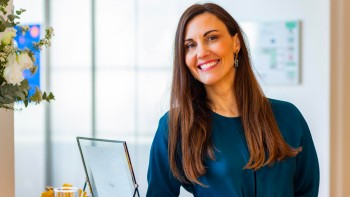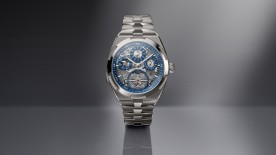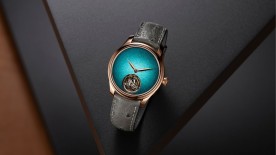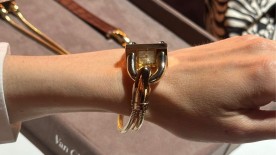Ten years is something to celebrate! And the Fondation de la Haute Horlogerie (FHH) did not miss the opportunity to commemorate this 26 and 27 April. During the first leg of its ‘Roadshow’ at the ‘we are_club’ in the 8th arrondissement of Paris, the FHH presented its activities around watchmaking knowledge and education, as well as its certification. These included a ‘Watch Icons’ augmented reality experience - developed in collaboration with the FHH's partner brands - featuring twelve digital works, an exhibition of twelve timepieces from brands of French origin, a watch movement assembly and disassembly workshop with professional watchmakers, a live performance by gouache artist Estelle Lagarde, themed tables, lectures, panel discussions on topical subjects, and of course the famous quiz night, with questions taken from their training.
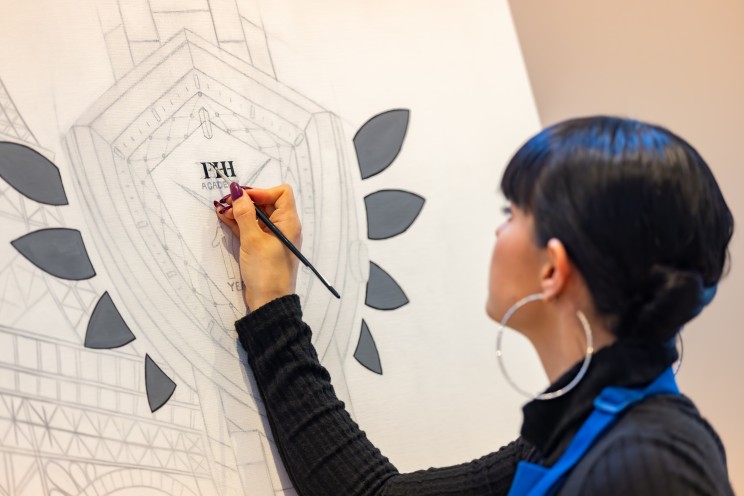
The FHH Academy also unveiled its new training course - the Watch Essentials course in video format. Aimed at the general public, these educational and entertaining courses are similar to a Masterclass, divided into successive episodes. Students will find a variety of content on the platform, including podcasts and quizzes, which can be accessed at any time to facilitate learning. Available on the FHH website, the course will initially be available only in France, then in Switzerland.
We spoke to Aurélie Streit, vice-president of the FHH and founder of the FHH Academy, about the mission of the FHH Academy, the new online course and her most rewarding time at the foundation.
Don't miss our interview with Pascal Ravessoud, Vice-President of the Fondation de la Haute Horlogerie.
In a few words, what is the FHH Academy?
The FHH Academy is one of the pillars of the Fondation de la Haute Horlogerie - today the most important one. It was founded in 2014 with the aim of imparting general watchmaking culture, primarily to watch salespeople. Ten years ago, brands were ‘retailing’-i.e. opening their own boutiques (for some), or leaving multi-brand retailers altogether (for others). It was therefore important to support the training of these salespeople, who were no longer in a multi-brand environment and who needed to acquire cross-disciplinary knowledge. In the past, multi-brand retailers naturally trained their sales staff quite well. But when we moved to mono-brand boutiques, it became quite clear that we absolutely had to provide these salespeople with something other than what they had in their own shops, particularly as customers were becoming increasingly educated and the salespeople weren't necessarily able to cope.
The other need was to realise that watchmaking is a culture in its own right with its own vocabulary, which is quite complicated. What makes a watch valuable? Whether it costs 100 francs, 1,000 francs or 100,000 francs? It's its history, its finish, its technology, its DNA - all these attributes that need to be explained.
There is so much to learn about watchmaking and the watch industry in general. How do you decide which areas to focus on?
It's not exactly me who chooses them, we're a whole team. The FHH has a fantastic network of experts. I regularly say that we have a real heritage in this area. It was our job to find people who were capable of popularising this knowledge, selecting the right information that was understandable, and at what level of understanding. And they were very good at it. That's how we built up all our course programmes, with essential information, information that was a little more specialized, and information that we called ‘expert’.
When we built the Academy ten years ago, we really told ourselves that we wanted it to be fun. Basically, this was because we were targeting salespeople, who aren't necessarily people who could naturally spend eight hours behind a workbench like a watchmaker. So we really adapted our training to our target audience, making it fun, easy to understand and in segments. We have designed both face-to-face and digital programmes that are short and progressive.
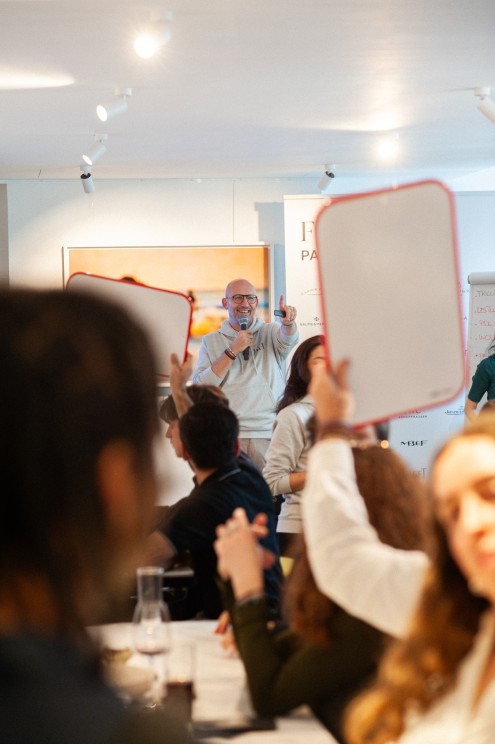
The FHH Academy is designed to be accessible to everyone. Do you have dream figures in terms of demographics to develop an appreciation of watchmaking culture? Do you have any strategies for achieving these goals?
That's a good question. To be perfectly honest, ten years ago, when we started the Academy, we said to ourselves that it would be fantastic if we managed to train 30,000 people. In fact, at the time, we carried out a small study and imagined that there were nearly 30,000 salespeople in the world. I think we were quite wrong. Today, we've trained 35,000 people. So we've reached our target for the Academy.
What we're really trying to do is reach out to new generations. Collectors aren't exactly our target. Our target is more people who are interested without necessarily knowing anything about watchmaking, or who don't know anything about watchmaking at all. Because our aim as a foundation is to talk about watches as objects of art and culture, and to reach out to as young and broad an audience as possible. These new generations were not born with a watch on their wrist. These people will look at the time everywhere before they look at their wrist. So it's up to us to share our taste for this watchmaking culture with them.
What about women? Do they take part in these events?
Absolutely. Last year we had an exhibition called ‘What Time Is It?’ and the year before we had another exhibition called ‘Time Design’ and we realised that as many women as men came to see it. ‘Time Design was an exhibition with a lot of products, and there was a lot of interest from women, including for technical products. We paid a lot of attention to that and we weren't disappointed. So yes, we think that women are very interested in watchmaking. All we need to do is adapt our approach, perhaps talk differently, and simply consider them.
The world of watchmaking is constantly changing. How does the FHH Academy support the continuing education and skills development of certification holders beyond initial training, particularly in the light of new technologies and trends?
We have divided our content into three levels. In fact, we've done all the work I was explaining earlier to find out where we start and where we end, in other words, the hierarchy of information. We're going to work on this raw material in a very different way, because we've taken cultural approaches to training into consideration from the outset. This is where we will adapt to the way in which training is consumed, to the local culture. The training is developed here in Geneva, but it is primarily delivered on the markets by local instructors who speak the local language and who will pass on the information in the right way, inspiring the learners. Obviously, the content is the same, but the way in which the training is delivered is completely different. For example, an instructor in the United States will deliver the course differently than in Japan.
We then developed a whole range of other tools, including distance learning and self-learning applications. Today, in France, we're launching self-learning based on educational videos, like a little Netflix series. We're constantly adapting to new formats and to changes in the world. In fact, all these tools continue to coexist, with no one replacing the other. This is what we call ‘blended learning’. They complement each other so that there's something for everyone. Of course, we are constantly updating these tools with information that we feel is no longer relevant at any given time, with new developments, trends and new figures. This is our way of adapting to today's world, every day.
Could you tell us about your most rewarding moment at the FHH? A moment that, in your opinion, really validated your mission and your work?
One comes to mind straight away, but it was a long time ago. When we started out, the FHH had a nice network, lots of content, it had already done some exhibitions, but had never really done any training. So when we launched the training ten years ago, we really had to be credible and gain legitimacy. And that wasn't very easy, because when we started approaching brands and telling them we were opening a training department, even though we already had some content, the brands - at least at their respective head offices - weren't really interested in what we were doing.
And yet we sensed that there was a real need in the markets. So we decided to work with local instructors, whom we trained and supported for 6 to 9 months. We started the project in 2013 and our first training course took place in the summer of 2014. The majority included very good watchmaking connoisseurs, but not necessarily instructors. Once they had been trained, they went straight out to find boutiques, subsidiaries of different watch brands, multi-brand points. Then it worked very quickly, and there was an appetite in the markets for FHH training courses.
But in Switzerland, there was still very little interest. This lasted for one or two years, during which we trained a lot in the markets, but very little in Switzerland. Then one day, one of the big brands I'd wanted to work with for a long time - to whom I'd presented our programmes and who'd told me they didn't need them - called me up and said ‘I'm hearing about the quality of your training courses from all my subsidiaries. Can we sit down and look at what we can do together in an organised way?’
It was a truly satisfying moment. We'd managed to do it; there was real recognition of our expertise outside Switzerland. And then it all came back home. From then on, everything was easier.
